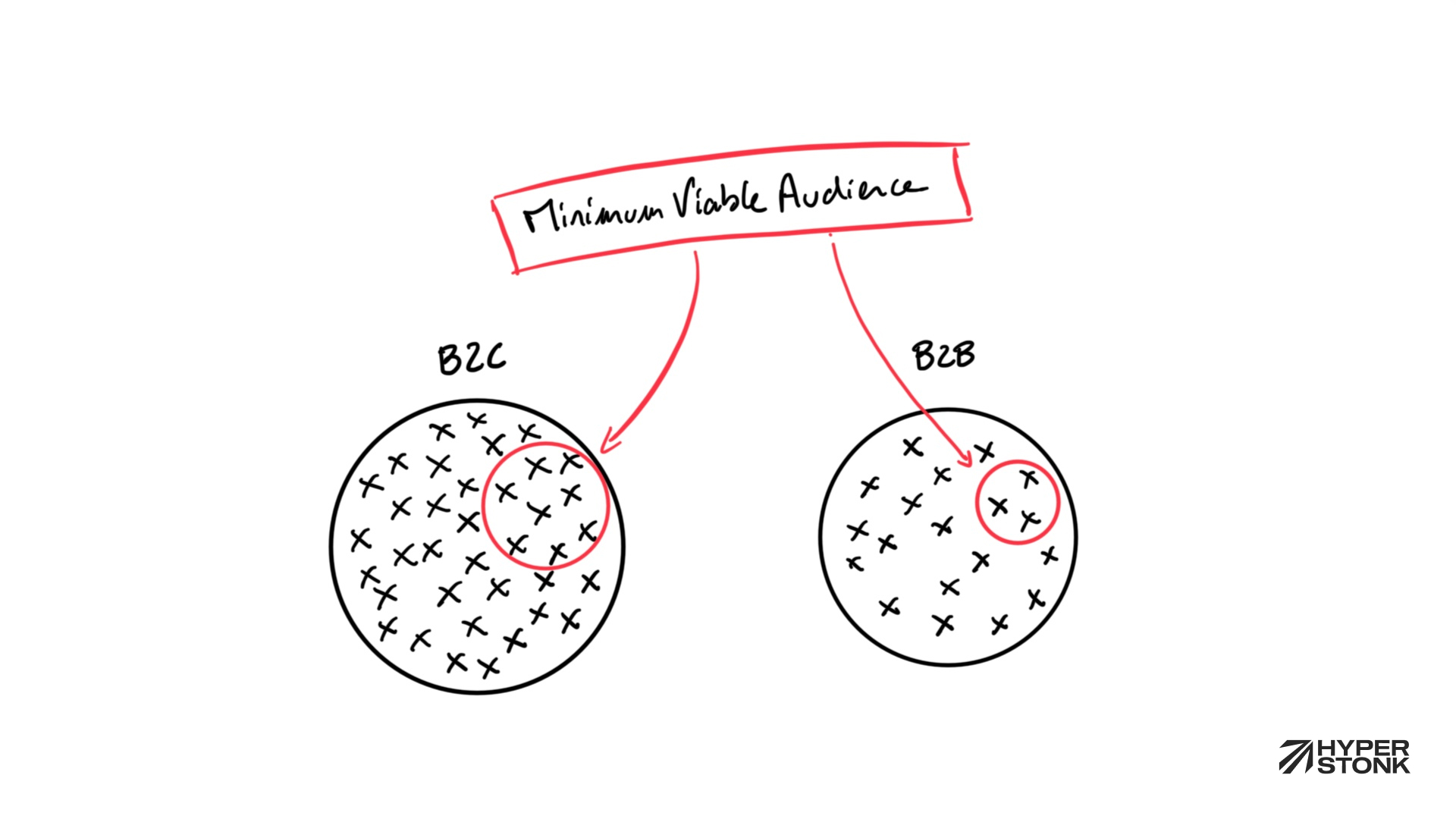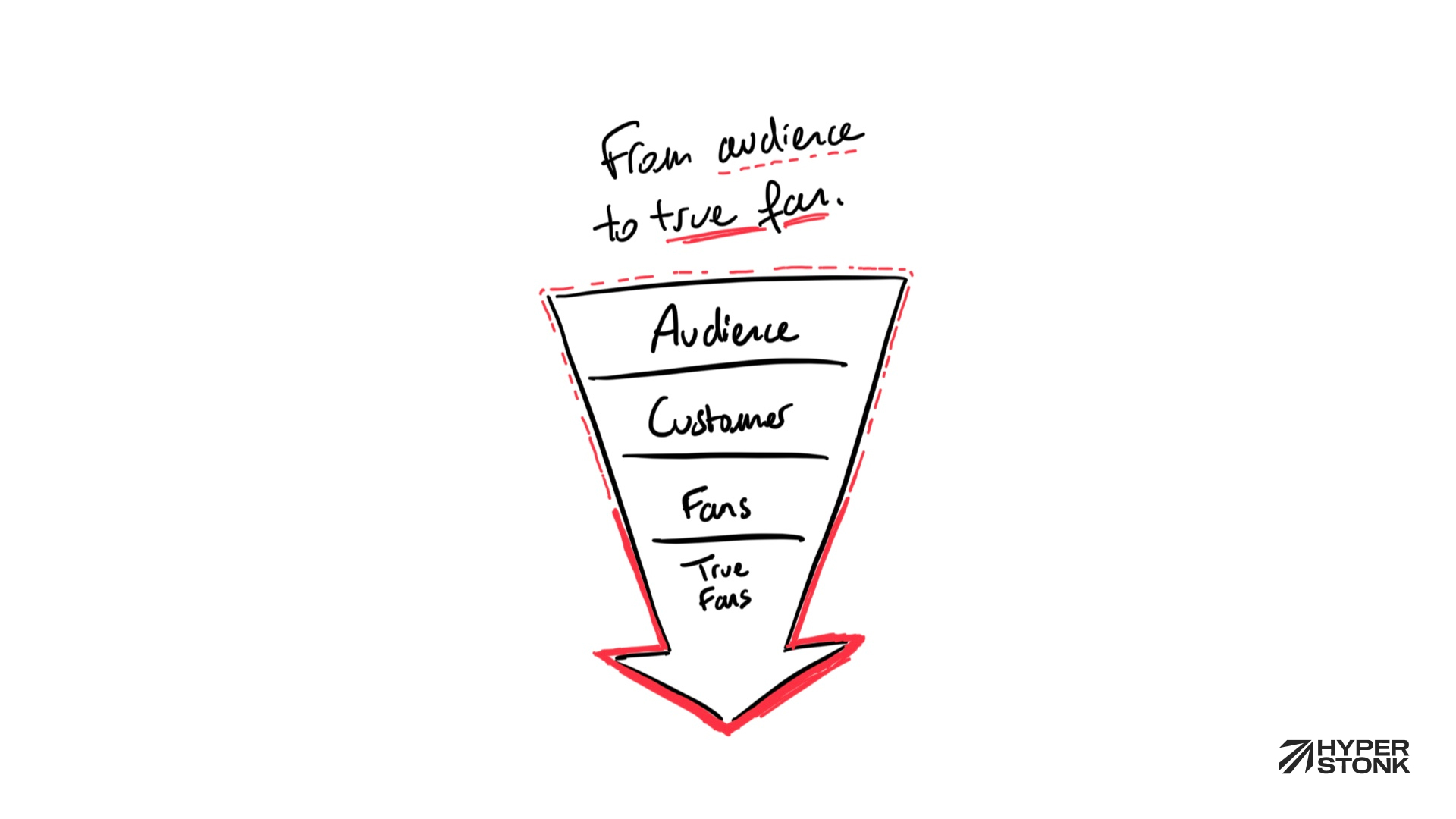V. Market & niche
In most industries, you’ll see this recurring pattern:
- Number 1 has twice the market share of Number 2.
- Number 2 has twice the market share of Number 3.
- And so on...
Often, it’s the first to arrive and the most popular that takes the lead.
So you have three options:
- Establish a strategy to become number 1
- Be the first to enter a new market
- Be seen as the only viable option for a specific problem
In this chapter, we’ll answer points 2 and 3.
We’ll choose your market and a category where you’ll be seen as the only viable option.
1. The Starving Crowd.
There’s a market out there that desperately needs your services and skills.
Together, we need to find it.
Our primary objective is to consciously choose the right market for your business.
The only rule is:
don’t get romantic about choosing your target audience.
Your business should serve people who can pay you what you’re worth and meet your criteria. That’s all there is to it.
And let’s not forget that choosing a market is your business’s decision. No one else’s.
So let’s choose wisely.
Once you find it, everything will be easier.
If everything goes according to plan, you’ll wonder why you didn’t do the exercise sooner.
To find our ideal market, we need to focus on 4 critical criteria:
- pain
- purchasing power
- ease of targeting
- growth potential
Respond to a massive pain.
The pain is the pitch.
The price you can charge will be proportional to the intensity of the pain felt by your targets.
When they hear about the solution to their problem and, inversely, about their life without it, they should be seduced by your solution.
Purchasing power.
Make sure your targets have the money, or access to the money, to afford your products and services at the prices you sell them.
If you don’t check this box, it’s not worth your time.
Easy to target.
Make things easy for yourself by looking for markets that are easy to target because ... why bother?
Growth potential.
Growing markets are like tailwinds:
They make things happen faster.
Declining markets are like headwinds:
They make all your efforts more difficult.
If you don’t check this box, forget the market.
Otherwise, it will slow you down.
Choosing a viable market.
To choose the right market, you can follow these steps:
- List all the markets you think of.
- Rank them.
- Reduce the list down to the smallest selection possible.
- Select the right one by comparing the last survivors.
Step 1 protip:
When listing your possible markets, you’ll see that they inevitably fit into one of these 3 buckets:
- Health - Enhance the health of your customers
- Wealth - Create wealth for your customers
- Relationships - Enhance the relationships of your customers
You’ll see that clearly attaching one of these three labels to each market will help you filter them down later.
Step 2 protip:
Rank them by “number of criteria checked,” meaning:
- is it in pain? Yes ⇒ +1
- is it growing? Yes ⇒ +1
- is it easy to target? Yes ⇒ +1
- do people have the purchasing power? Yes ⇒ +1
The higher the number, the higher in your list.
Step 3 protip:
Keep only markets meeting the 4th criteria (purchasing power).
Step 4 protip:
Select the one you like most AND that you’re the most capable of serving.
To do your selection easily, use the Notion database I made in the free tools section named Market Selector.
2. Niching down.



You need to “niche down” by at least 3–4 levels.
Choosing a specific niche for your business will enable you to make much more money. You can sell particular products and services at a much higher price than generic ones.
Here’s a simple example:
Time management course
Too generic ⇒ $:
Time management course for B2B outbound sales representatives specializing in the sale of electronic products.
Specific enough ⇒ $$$$$:
Same course, but not the same price.
For the SaaS guys in the room:
The advantage is enormous for a digital product. You can forget about developing custom features for customers who don’t have the exact same needs.
Your “custom development” becomes a generic use case for your service.
To find your niche, we need to start by asking ourselves:
- With and for whom do you really like to work?
- To whom does the brand best connect naturally?
I recommand you use Market Selector in the tools section to do this easily.
PS With it, you can also choose the corresponding LinkedIn sectors from the complete list of sectors I scrapped from LinkedIn.
Enjoy!